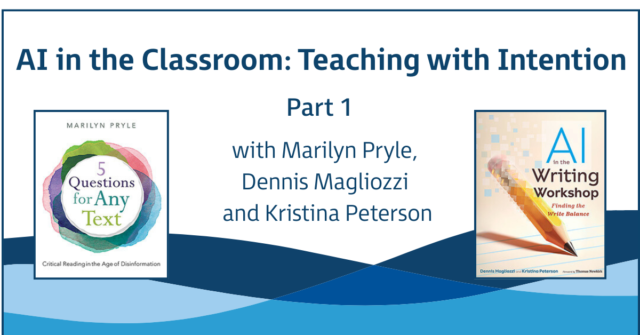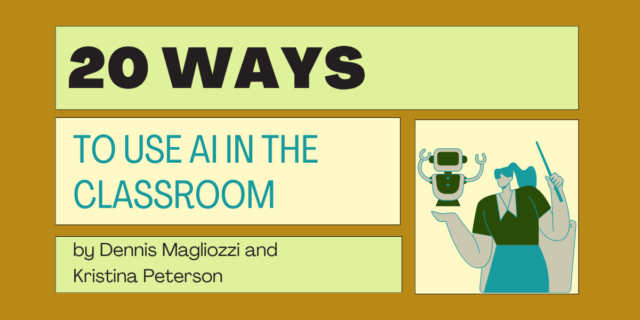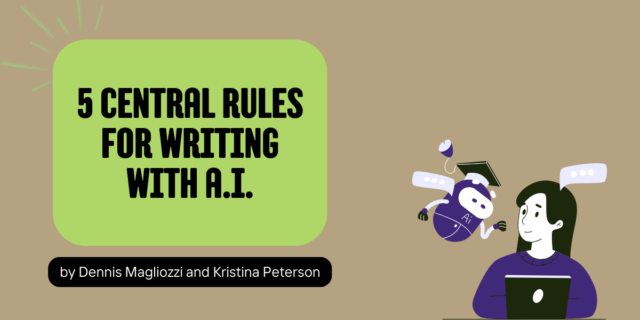
The following is adapted from A.I. in the Writing Workshop by Dennis Magliozzi and Kristina Peterson.
The first step into getting the most from generative AI is to carefully craft what you, the user, types into the text box to get the most precise and valuable information. This is known as prompt engineering. The old adage “garbage in, garbage out” is no truer than when seeking support from generative AI. The quality of a prompt directly impacts the quality of its response. Vague or ambiguous prompts will produce vague or ambiguous responses. Generative AI isn’t Google™ or any other conventional search engine. Instead of directing users to an existing source on the internet, generative AI will respond to the prompt they put in with tailored output in a conversational tone. It requires clear and specific prompts to generate relevant and detailed responses. Users have to think very carefully about what they’re looking for from it. Well-thought-out and specific prompts can unlock the full potential of generative AI, ensuring that users receive the feedback they want. It requires the user to engage in rhetorical and critical thinking skills and strategies to craft an effective prompt from the software.
When we engineer a prompt for generative AI, we keep these three things in mind:*
- Provide context: Indicate the perspective you want the chatbot to take/how you want it to respond (as a teacher, as an editor, as a writing coach). This will enhance its responses.
- Identify what you need: Clearly explain the task you want the bot to complete (design a lesson plan, create a rubric, organize a to-do list).
- The more specific, the better: If your prompt is incomplete or lacks important context, the chatbot’s response is likely to be just as vague. Detailed and well-defined prompts lead to more precise responses.

Create a Chain Prompt: To improve the quality of your interactions with generative AI and leverage its strengths, keep the following three things in mind:
- Prompt and revise: Most generative AI tools like ChatGPT can follow the thread of your conversation. So instead of starting over, you can continue to prompt the bot until you get what you are looking for. This allows you to direct the bot toward more detailed and desired results. This trial and error method will help hone your prompt engineering skills.
- Modify the audience: Consider who or what it is you are generating a response for. Ask the bot to change the tone or mood or complexity of the result it produced.
- Revamp the format: You can prompt and ask for a more desired format such as a bulleted list, a letter to the editor, or even a table where you specify the columns and rows.
Example: Can you also provide three homework questions that align with the lesson plan you’ve generated? Or can you create a four-point rubric for the assessment in the lesson plan?
Leverage the AI’s Strengths: Understand what the AI does best and tailor your prompts to these strengths. AI models are excellent at processing and synthesizing large amounts of information. When crafting a prompt, you can leverage this strength by asking for examples, summaries, explanations, or comparisons.
AI models are also excellent at mimicking what we input. It can mimic the style or tone of an example you paste in. If you want to generate an example essay for students to analyze, include a sample in your prompt for the AI to emulate. Students can also leverage and misuse this ability. Finally, AI can be a powerful grammar and editing tool.


Find the “write balance” with AI in the Writing Workshop, a blueprint for teachers to navigate this new terrain while preserving the essence of creative struggle and critical thinking. Dennis Magliozzi and Kristina Peterson provide a detailed look at how to ethically integrate AI into writing units across the school year, including personal narrative, poetry, analysis, and research. Their ready-to-use exercises, activities, and prompts give you a framework of best practices. Your students will learn to critically evaluate AI-generated content and engage with AI as a collaborative thinker rather than simply accepting what AI produces.


